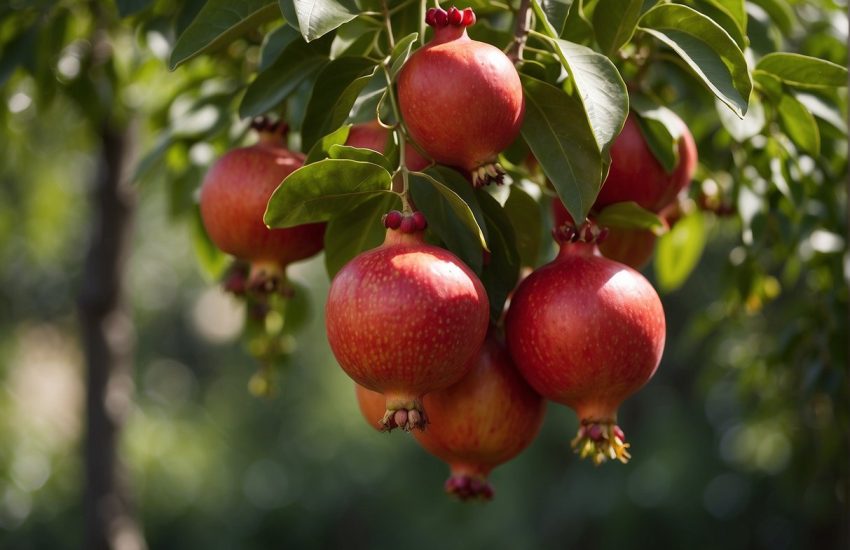Grow Sugar Snap Peas: A Guide to Planting and Harvesting
Sugar snap peas are a delicious and nutritious vegetable that can be easily grown in a home garden. These peas are a type of edible-podded pea, meaning that the entire pod is edible and provides a satisfying crunch. Growing sugar snap peas is a great way to add fresh produce to your diet and enjoy the taste of homegrown vegetables.
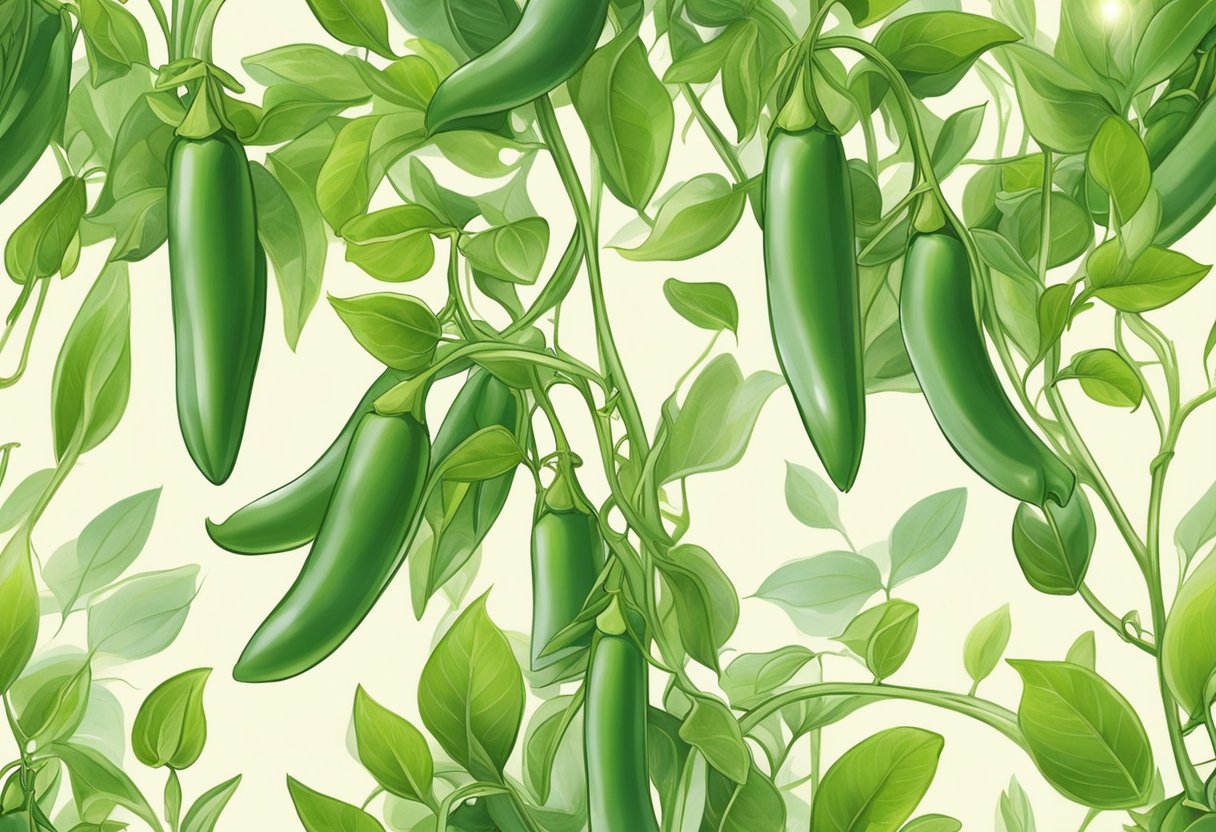
To grow sugar snap peas, it is important to choose a sunny location with well-draining soil. These peas prefer cooler temperatures and can be planted in early spring or late summer for a fall harvest. Sugar snap peas can be grown vertically on trellises or allowed to sprawl on the ground, depending on your preference.
When planting sugar snap peas, it is important to soak the seeds overnight before planting to promote germination. These peas should be planted about 1 inch deep and spaced 2-3 inches apart. Regular watering and fertilization will help the plants grow strong and produce a bountiful harvest. With a little effort, anyone can successfully grow sugar snap peas and enjoy the fresh taste of homegrown vegetables.
Understanding Sugar Snap Peas
Characteristics of Sugar Snap Peas
Sugar snap peas are a type of pea that is known for its edible pods. They are sweet, crunchy, and a great addition to any dish. Sugar snap peas are part of the legume family (Fabaceae), which means they are related to beans and lentils.
The pods of sugar snap peas are plump and crisp, with a bright green color. They are typically harvested when they are about three inches long, although some varieties can grow up to six inches long.
Nutritional Profile
Sugar snap peas are a nutritious vegetable that is low in calories and high in fiber. They are also a good source of vitamin C, vitamin K, and folate. One cup of sugar snap peas contains only 35 calories, making them a great snack option for those watching their calorie intake.
Varieties of Sugar Snap Peas
There are several varieties of sugar snap peas available, each with its own unique characteristics. Some popular varieties include:
Super Sugar Snap: This variety is known for its large, juicy pods and high yield. It is a great option for those looking to grow sugar snap peas for the first time.
Sugar Ann: This variety is an early producer, with pods that are ready to harvest in just 55 days. It is also known for its sweet flavor and tender texture.
Purple Pods: As the name suggests, this variety has purple pods that are just as sweet and crunchy as their green counterparts. They are a great option for adding color to salads and other dishes.
Overall, sugar snap peas are a versatile and nutritious vegetable that is easy to grow and adds a sweet crunch to any dish.
Preparation for Planting
Choosing the Right Soil
Sugar snap peas thrive in well-draining soil that is rich in organic matter. Before planting, it is important to prepare the soil by removing any weeds or rocks and adding compost or other organic matter to improve soil fertility. The ideal soil pH for growing sugar snap peas is between 6.0 and 7.5.
Selecting Quality Seeds
When selecting sugar snap pea seeds, it is important to choose high-quality seeds that are specifically labeled for edible pod peas. Look for seeds that have a high germination rate and are free from disease and pests. It is best to purchase seeds from a reputable supplier to ensure the best quality.
Optimal Planting Conditions
Sugar snap peas prefer to be planted in early spring when the soil is cool and moist. They require full sun exposure and well-drained soil. Plant seeds 1-2 inches deep and 2-3 inches apart in rows that are 18-24 inches apart. It is important to ensure that the soil remains consistently moist but not waterlogged.
Overall, proper preparation for planting sugar snap peas involves selecting the right soil, choosing quality seeds, and providing optimal planting conditions. By following these guidelines, gardeners can ensure a successful crop of delicious and nutritious sugar snap peas.
Planting Process
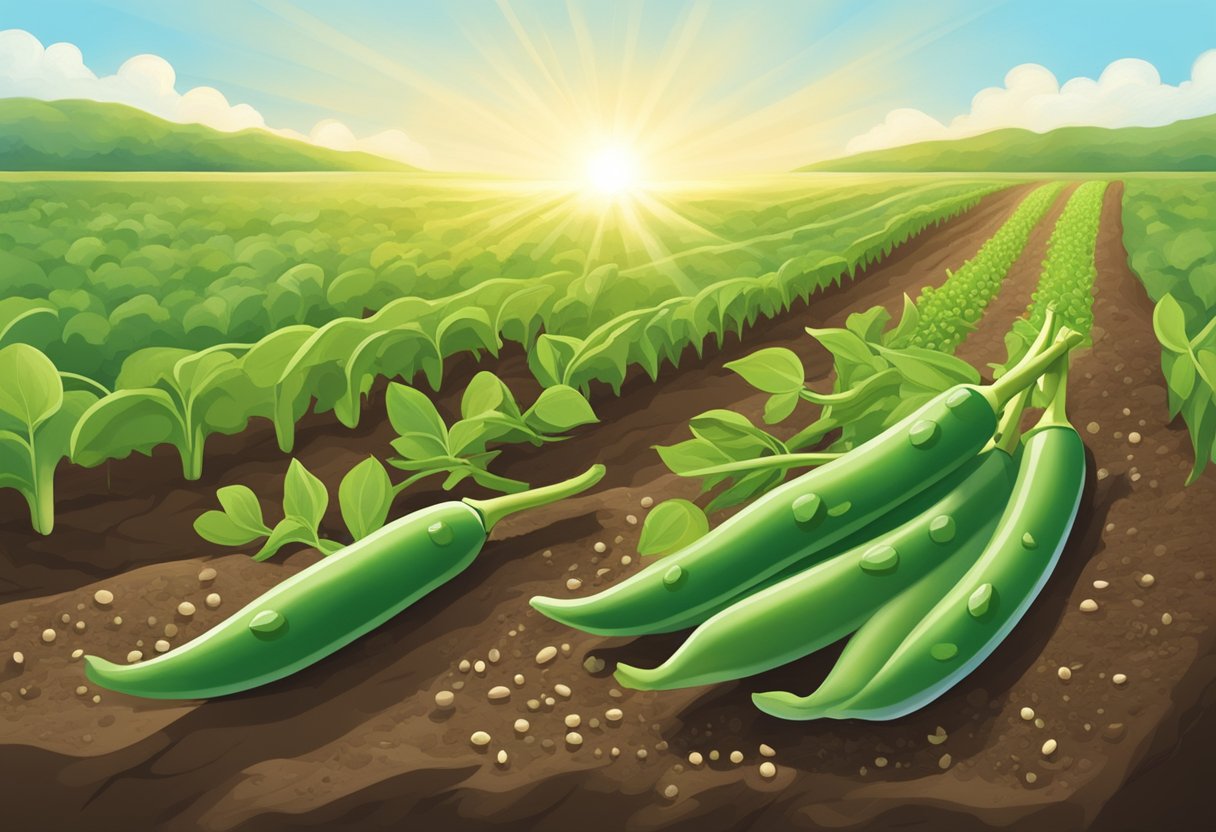
Sowing Seeds
When it comes to sowing sugar snap pea seeds, early spring is the best time to start. Sugar snap pea seeds can be sown directly into the soil, but it is recommended to start them indoors 4-6 weeks before the last frost. This will give them a head start and allow for a longer growing season.
Inoculation
Inoculating sugar snap pea seeds with rhizobia bacteria is recommended before planting. This process helps to increase the plant’s ability to fix nitrogen, which is essential for healthy growth. Inoculant can be purchased at most garden centers or online. Simply mix the inoculant with a small amount of water and coat the seeds before planting.
Spacing and Depth
It is important to space sugar snap pea seeds properly to allow for healthy growth. Seeds should be planted 1-2 inches deep and spaced 1-2 inches apart in rows that are 18-24 inches apart.
During the late spring, when the soil has warmed up and the danger of frost has passed, sugar snap pea seeds can be sown directly into the soil. Sow the seeds 1-2 inches deep and space them 1-2 inches apart in rows that are 18-24 inches apart.
Overall, the planting process for sugar snap peas is relatively simple and straightforward. With proper sowing, inoculation, and spacing, gardeners can expect a bountiful harvest during the growing season.
Caring for Sugar Snap Peas
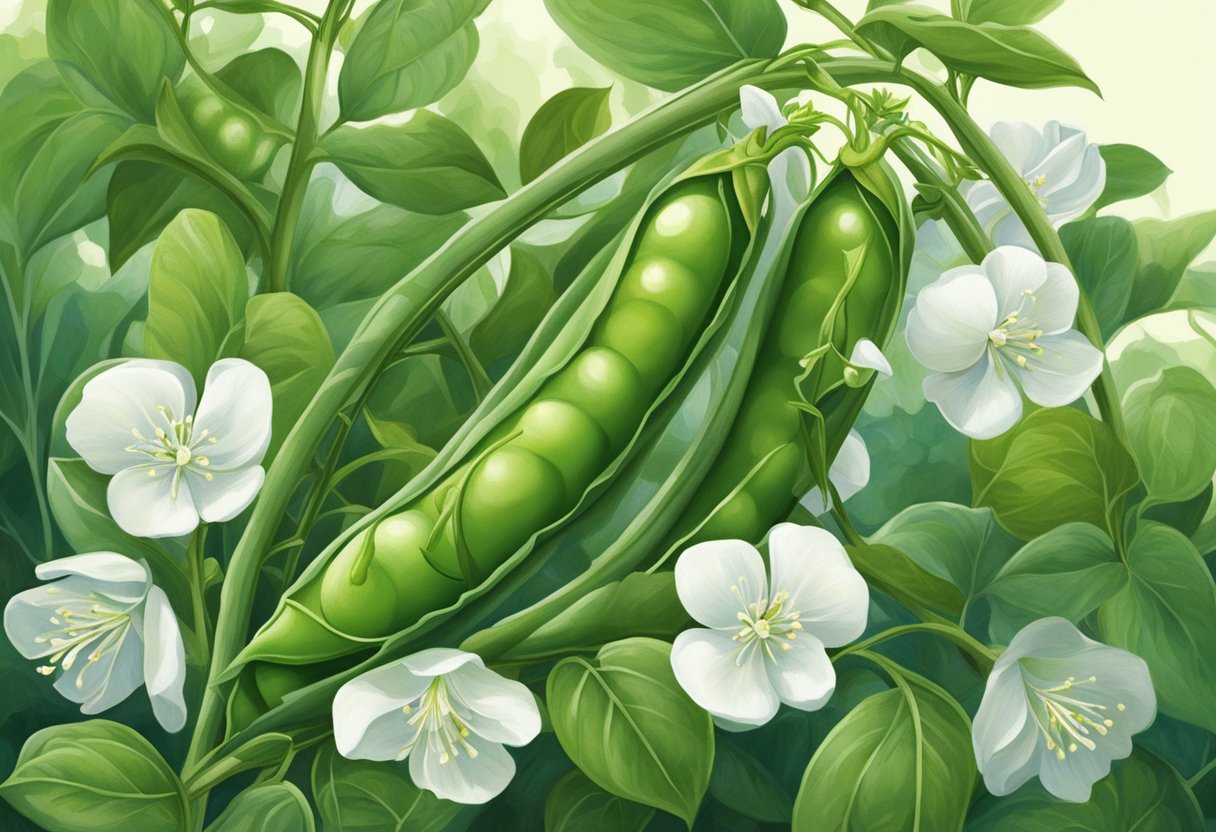
Watering Requirements
Sugar snap peas require consistent moisture to thrive. They should be watered deeply at least once a week, or more frequently during hot and dry weather. It is important to avoid overhead watering, as this can lead to the development of fungal diseases. Instead, water the base of the plants to keep the soil evenly moist.
Fertilizing and Nutrition
Sugar snap peas are heavy feeders and require regular fertilization. Nitrogen is particularly important for healthy growth and should be applied every three to four weeks throughout the growing season. A balanced fertilizer with equal amounts of nitrogen, phosphorus, and potassium can also be used.
Support Structures
Sugar snap peas are climbers and require support structures to grow properly. A trellis or other vertical structure should be installed before planting. The plants can then be trained to climb the structure as they grow. This helps to keep the plants upright and prevents them from sprawling on the ground.
Managing Pests and Diseases
Sugar snap peas are susceptible to a variety of pests and diseases, including powdery mildew, aphids, slugs, snails, fusarium wilt, and pea weevils. Regular monitoring and management can help prevent these issues. Insecticidal soap can be used to control aphids, while copper fungicides can be used to prevent powdery mildew. Slugs and snails can be controlled with traps or baits. If fusarium wilt or pea weevils are present, infected plants should be removed and destroyed to prevent the spread of the disease.
Harvesting Sugar Snap Peas

When to Harvest
Sugar snap peas should be harvested when the pods are plump and round, and the peas inside are still small and sweet. It is important to harvest them at the right time to ensure the best taste and texture. Generally, sugar snap peas are ready to be harvested about 60 to 70 days after planting.
How to Harvest
To harvest sugar snap peas, use a pair of clean scissors or garden shears to cut the stem of the pod just above the point where it attaches to the plant. Be careful not to damage the plant or the neighboring pods. It is important to harvest the pods regularly, as leaving them on the plant for too long can cause them to become tough and stringy.
Post-Harvest Handling
After harvesting, sugar snap peas should be stored in the refrigerator to keep them fresh. They can be stored in a plastic bag or container for up to a week. Before eating, rinse the pods in cold water to remove any dirt or debris. Sugar snap peas are best eaten fresh, as they tend to lose their sweet taste and crisp texture over time.
In summary, harvesting sugar snap peas at the right time and handling them properly after harvest is crucial to ensure their sweet taste and fresh texture. By following the tips outlined above, gardeners can enjoy a bountiful crop of delicious sugar snap peas.
Growing in Containers

Growing sugar snap peas in containers is a great option for those with limited garden space or who want to grow peas on their patio or balcony. Here are some key considerations for container gardening:
Container Selection
When selecting a container for growing sugar snap peas, choose a pot that is at least 12 inches deep and 18 inches wide. Plastic containers are lightweight and easy to move, while ceramic or terracotta pots are more decorative but can be heavy. Bamboo poles or mesh can be used to create supports for the peas to climb on.
Potting Mix and Drainage
Use a high-quality potting mix that is well-draining and rich in organic matter. Peas require good drainage, so make sure the container has drainage holes in the bottom. Adding a layer of gravel or broken pottery to the bottom of the container can improve drainage.
Caring for Container-Grown Peas
Peas grown in containers require regular watering, especially during hot, dry weather. To prevent the soil from drying out too quickly, add a layer of mulch on top of the soil. Peas also require support as they grow, so use bamboo poles or mesh to create a trellis or support system for the plants. If growing in a greenhouse, ensure that the temperature and humidity are suitable for sugar snap peas to thrive.
With these tips, growing sugar snap peas in containers can be a fun and rewarding experience.
Enjoying Your Harvest
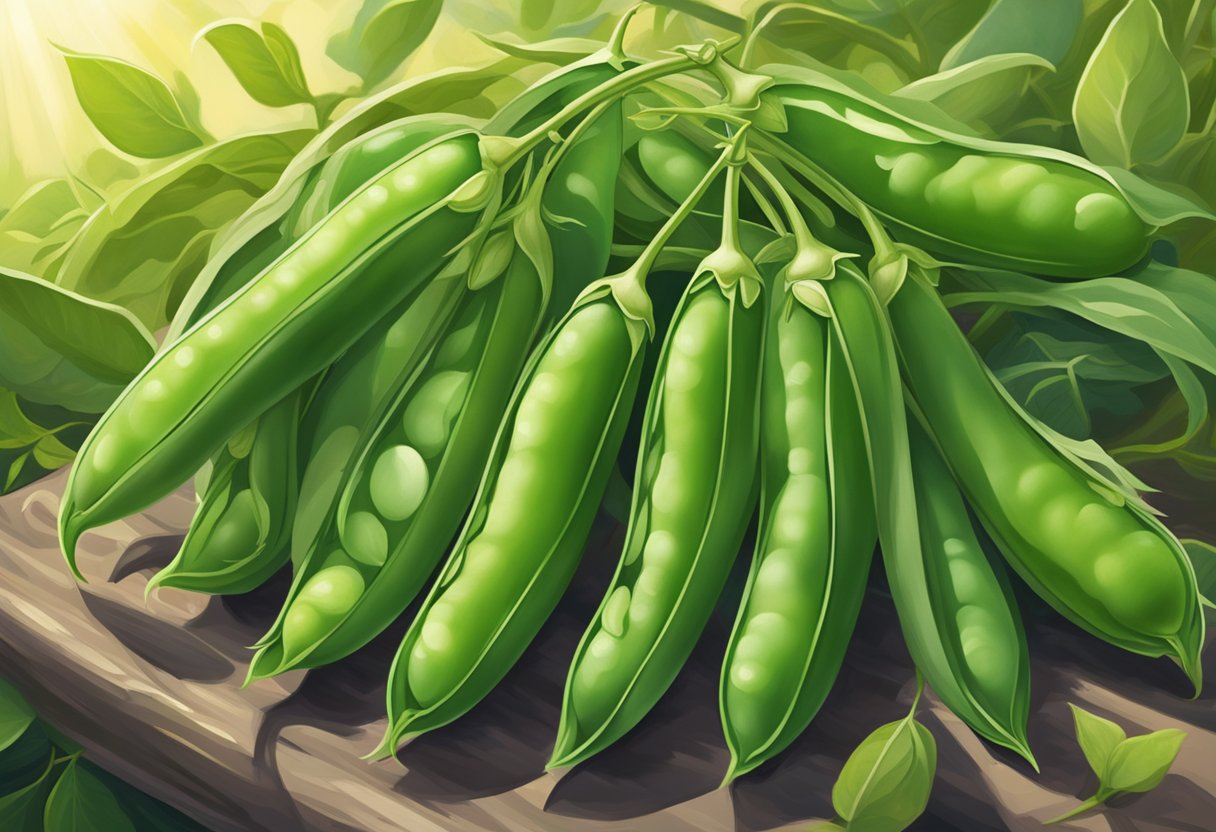
After putting in the hard work of growing sugar snap peas, it’s time to enjoy the fruits of your labor. Here are some ways to savor the delicious taste and texture of your home-grown sugar snap peas.
Fresh Consumption
One of the best ways to enjoy sugar snap peas is to eat them fresh. The sweetness and crunchiness of the peas are at their peak right after picking. Simply rinse them under cold water, snap off the ends, and enjoy them as a healthy snack or add them to a salad for an extra crunch.
Cooking and Recipes
Sugar snap peas can be cooked in a variety of ways, including stir-frying, boiling, steaming, and roasting. They make a great addition to stir-fries, pasta dishes, and soups. Here are some recipes to try:
- Sugar Snap Pea and Carrot Stir-Fry: Stir-fry sugar snap peas and carrots with garlic, ginger, and soy sauce for a quick and easy side dish.
- Sugar Snap Pea Salad: Toss sugar snap peas, cherry tomatoes, and feta cheese with a lemon vinaigrette for a refreshing summer salad.
- Roasted Sugar Snap Peas: Toss sugar snap peas with olive oil, salt, and pepper, and roast in the oven for a crispy and flavorful side dish.
Preservation Methods
If you have a surplus of sugar snap peas, you can preserve them for later use. Freezing and canning are two popular methods. Here’s how to do it:
- Freezing: Blanch the sugar snap peas in boiling water for 2-3 minutes, then transfer them to a bowl of ice water to stop the cooking process. Drain and pat dry, then place them in a freezer bag and store in the freezer for up to 6 months.
- Canning: Follow a trusted recipe for canning sugar snap peas to ensure safety and quality. Canned sugar snap peas can last up to a year in a cool, dark place.
No matter how you choose to enjoy your sugar snap peas, be sure to savor the sweetest and freshest taste possible.
Advanced Tips and Tricks
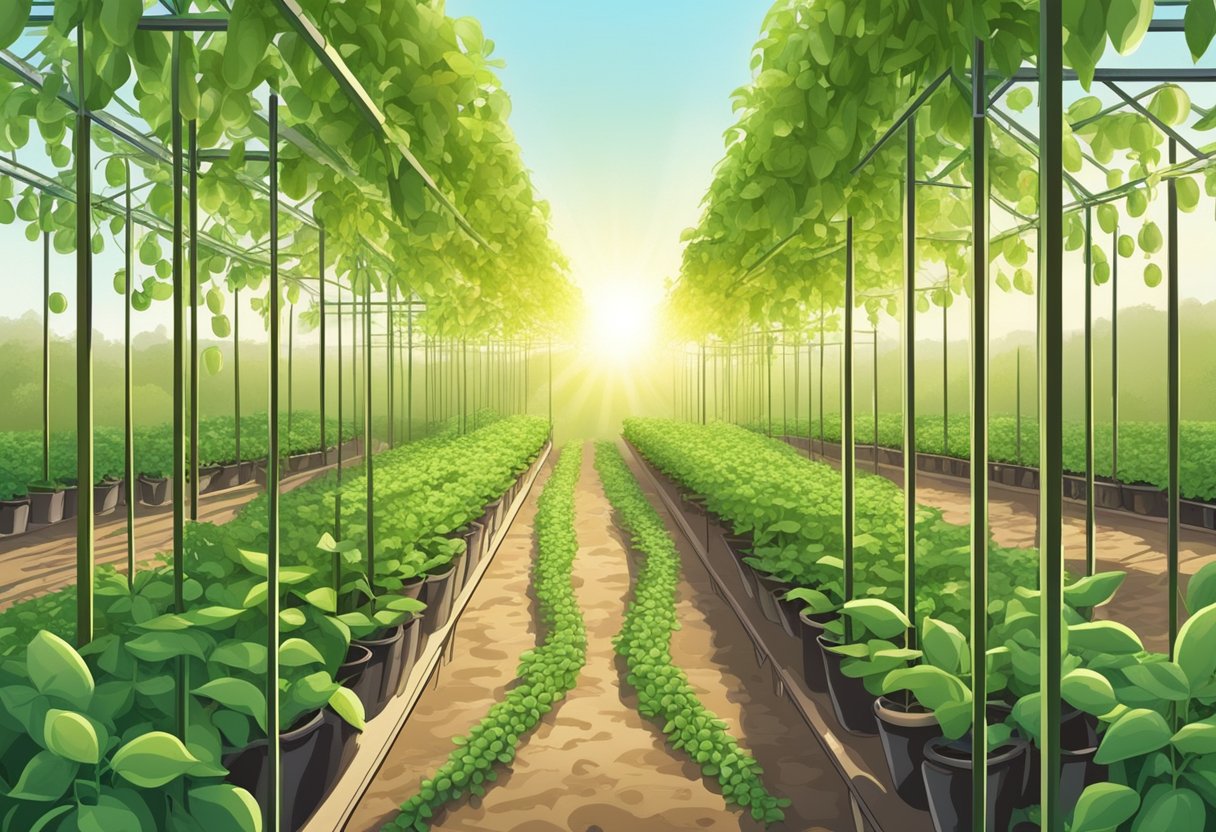
Maximizing Yield
To get the most out of growing sugar snap peas, gardeners must take certain steps to maximize the yield. One of the most important factors is to ensure that the peas are planted in an area that receives full sun for at least six hours a day. Additionally, sugar snap peas require well-draining soil that is rich in organic matter. Gardeners can add compost or aged manure to the soil to improve its quality.
Another way to maximize yield is to provide support for the plants to climb. This can be done by using trellises or stakes. By doing so, gardeners can ensure that the plants grow vertically and have access to more sunlight, which can lead to higher yields.
Seasonal Considerations
Sugar snap peas are a cool weather crop, which means that they grow best in temperatures between 55-70°F. To ensure a successful harvest, gardeners should plant sugar snap peas as soon as the soil can be worked in the spring. In areas with mild winters, gardeners can also plant sugar snap peas in the fall for a second harvest.
Companion Planting
Companion planting is a technique used to improve the growth and health of plants by planting them alongside other plants that have complementary characteristics. When it comes to growing sugar snap peas, gardeners can benefit from planting them alongside other legumes, such as beans and lentils. Legumes have the ability to fix nitrogen in the soil, which can improve the overall health of the plants.
Mulching can also be a useful technique when companion planting sugar snap peas. By adding a layer of organic material, such as straw or leaves, around the base of the plants, gardeners can help to retain moisture in the soil, suppress weeds, and improve soil quality.
Overall, by following these advanced tips and tricks, gardeners can increase the yield and health of their sugar snap pea crop. With proper care and attention, growing sugar snap peas from seed can be a rewarding and enjoyable experience.
Frequently Asked Questions
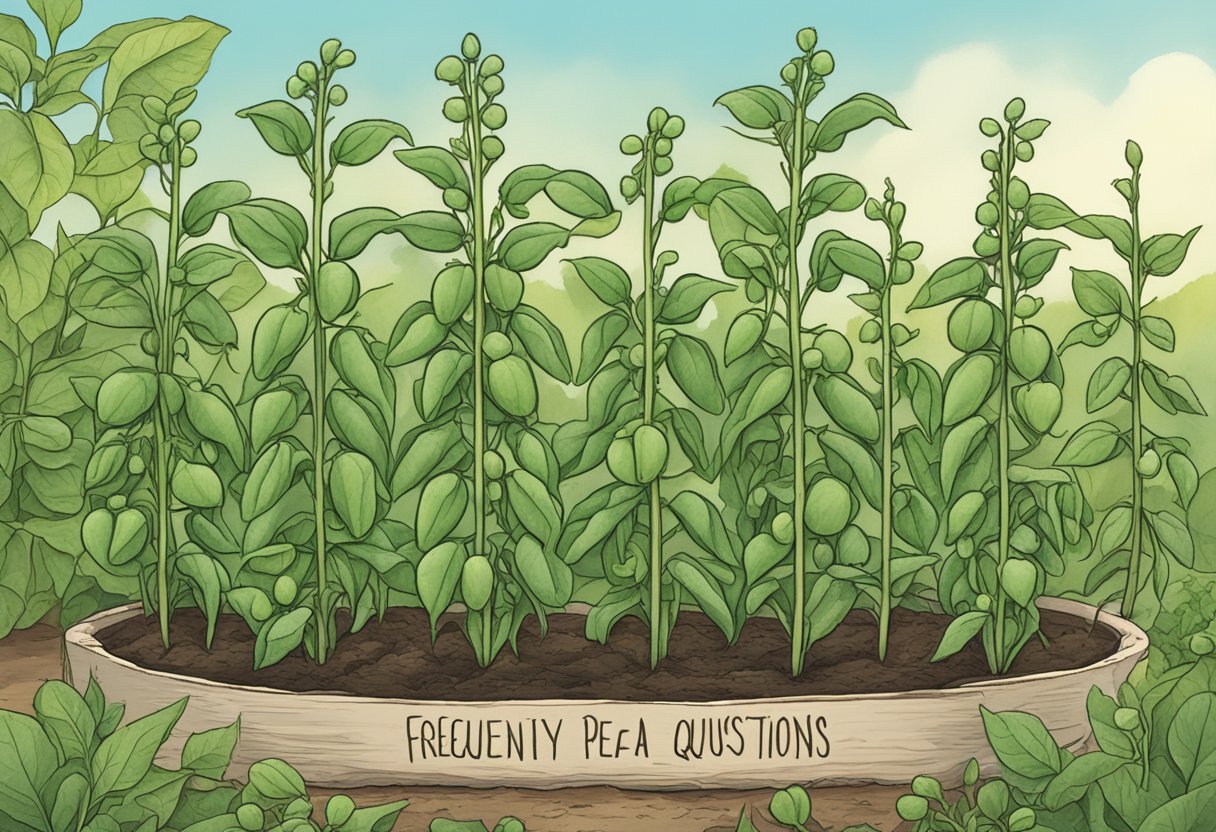
What are the best companion plants for sugar snap peas?
Sugar snap peas have shallow roots and prefer well-drained soil. Therefore, it is best to plant them with plants that have deep roots like corn or beans. Other good companion plants for sugar snap peas include carrots, radishes, and lettuce.
What is the ideal temperature range for growing sugar snap peas?
Sugar snap peas grow best in cool temperatures between 55°F and 75°F. They can tolerate some frost but not extreme heat. In warmer climates, it is best to plant them in the fall or winter.
What are the necessary steps to grow sugar snap peas from seed?
To grow sugar snap peas from seed, first, prepare the soil by loosening it and adding compost. Then, plant the seeds about 1 inch deep and 2 inches apart. Water the seeds regularly and keep the soil moist. Once the plants have grown to about 6 inches tall, thin them out to about 4 inches apart.
Can sugar snap peas be grown successfully in containers?
Yes, sugar snap peas can be grown successfully in containers. Choose a container that is at least 12 inches deep and wide. Fill the container with well-draining soil and plant the seeds about 1 inch deep and 2 inches apart. Water the seeds regularly and keep the soil moist.
What support structures are needed for sugar snap peas to climb?
Sugar snap peas are climbers and need support structures to grow properly. You can use trellises, stakes, or netting to support the plants. It is best to install the support structures at the time of planting to avoid damaging the roots later on.
When is the optimal planting time for sugar snap peas in zone 7?
In zone 7, the optimal planting time for sugar snap peas is in early spring, as soon as the soil is workable. Sugar snap peas can also be planted in the fall for a second harvest.

